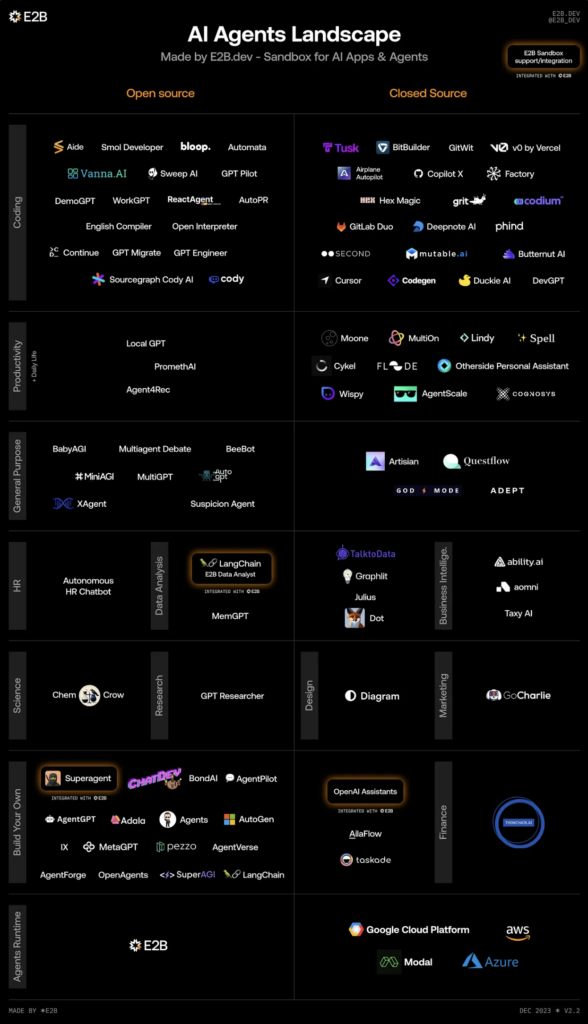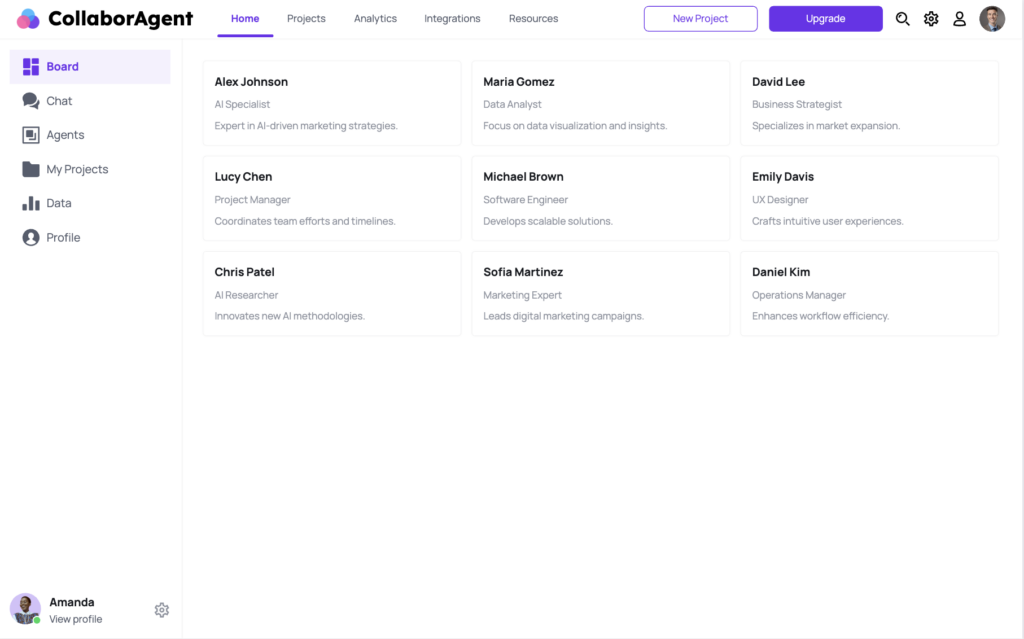
Way before I was born, the invention of EDI (Electronic Data Interchange) in the 60s and later FTP (File Transfer Protocol) in the 70s established how computer systems should interact with each other. In fact 90% of Fortune 500 companies still rely on EDI as a standardized way of exchanging documents electronically. APIs (Application Programming Interfaces) then came along in the 90s and entered mainstream adoption in the 2000s to enable more flexible and direct communication.
We soon thereafter started to see a plethora of Software-as-a-Service (SaaS) companies emerging to automate complex workflows from Cloud Infrastructure, Mobile Apps, Open Banking, and of course Crypto. These days every modern tech company now relies on APIs and if you’ve ever sold SaaS to enterprise customers like Telcos, Manufacturers, or Banks, you’ll be painfully aware that they usually try to get you to support legacy protocols far worse than FTP and EDI.
As the internet broke-out, APIs got better as did security, performance, and the developer experience. In fact, engineers got so good at the API game that there are now at least 17,000 SaaS companies of all sizes still alive in the US. Selling API calls isn’t just fun and sexy, it’s a juggernaut business, generating a blistering $318 billion per year globally. And given the historically depressed valuations these SaaS companies are seeing, they’re now the perfect target for Search and Private Equity roll-ups. But this SaaS party isn’t just eating the world, it’s soon about to get gobbled up by these faster, smarter, better looking, and for the time being (often prohibitively expensive) AI agents.
But why are so many nerds so keen on these agents? For starters, they fundamentally evolve how computer systems interact by introducing autonomy, proactiveness, problem-solving, adaptability, and intelligent decision-making. In other words, APIs are now getting their “it’s alive” Frankenstein moment. If you thought you could do cool stuff with Zapier by weaving together a few low-code tools like Retool and Webflow, or by using powerful web services from AWS, just wait until the 29 million software engineers and the 6 billion non-engineers (humans over the age of 12) start playing with these AI agents in massive multiplayer mode.
Will this massive multiplayer agentic AI game feel like being a productivity maestro conducting an orchestra of self-playing AI instruments that constantly improves 24 hours a day? At what point will the first anti-social solo-preneur who dislikes the idea of managing human employees, leverage AI agents to build the first $1 billion one-person business? Probably soon but for the next few months it seems likely that it’ll feel like a frustrating overhyped tech-first troubleshooting user experience which disappointed owners of the Humane AI Pin already understand all too well.
Will Agentic AI transform how we design, develop, and manage products? Probably. Could these agents fundamentally change the way we approach problem-solving, research, and innovation? I think so too. If you’re a product leader, founder, capital allocator, or a small business owner, it’s worth paying close attention to this stuff. Before I start painting too much magical tech surrealism, let’s figure out first what these agents are already actually capable of.
Agentic Advantages: Iteration and Reflection
Dr. Andrew Ng, one of the OGs in AI (he was a co-founder of Google Brain and Coursera) recently gave a talk at Sequoia Capital where he showed that even models like GPT-3.5, when used within an agentic workflow, can outperform more advanced models like GPT-4. This isn’t merely about incremental improvements; it’s about an enormous shift in how AI functions. Agentic AI is not just a tool—it’s a collaborator that can reason, adapt, and learn in ways that static AI systems simply cannot. At their worst AI agents are junior analysts that ask you too many questions and at their best they’re infinitely scalable star unicorn employees that constantly surprise you with the quality of their outputs.
Traditional AI systems operate much like highly skilled assistants, executing predefined tasks with remarkable efficiency. However, they lack the ability to learn from their actions, adapt to new information, or improve over time without human intervention. Agentic AI, on the other hand, is dynamic. It goes beyond executing tasks; it engages in a continuous process of iteration and reflection, akin to how human teams work through complex projects.
Try asking an LLM to write an essay. A traditional LLM might produce a draft in one shot, but its capabilities end there. An Agentic AI would take a different approach. It would start by outlining the essay, conduct research, draft the content, critique its own work, and then revise it until the essay reaches its optimal form. This process is like having a team of specialized agents—each focusing on different aspects of the task—collaborating to produce the best possible outcome.
This iterative approach leads to significantly better results. For example, Ng noted that GPT-3.5, when used in an agentic workflow, can also outperform GPT-4 in certain coding tasks. The power of reflection and iteration cannot be overstated; it’s what enables Agentic AI to refine its outputs and continuously improve performance.
Agentic Reasoning Design Patterns
| 1. Reflection | Self-Refine: Iterative Refinement with Self-Feedback, Madaan et al. (2023) Reflexion: Language Agents with Verbal Reinforcement Learning, Shinn et al. (2023) |
| 2. Tool use | Gorilla: Large Language Model Connected with Massive APIs, Patil et al. (2023) MM-REACT: Prompting ChatGPT for Multimodal Reasoning and Action, Yang et al. (2023) |
| 3. Planning | Chain-of-Thought Prompting: Elicits Reasoning in Large Language Models, Wei et al. (2023) HuggingGPT: Solving AI Tasks with ChatGPT and its Friends in Hugging Face, Shen et al. (2023) |
| 4. Multi-agent collaboration | Communicative Agents: For Software Development, Qian et al. (2023) AutoGen: Enabling Next-Gen LLM Applications via Multi-Agent Conversation, Wu et al. (2023) |
Generalization: From Go to Protein Folding
The potential of Agentic AI extends far beyond product development. Consider DeepMind’s AlphaGo, an AI that mastered the ancient game of Go, not just by mimicking human strategies but by discovering entirely new ones. This “alien” style of play stunned even the world’s best Go players, revealing strategies that had never been considered before. AlphaGo’s success was not just about winning a game—it was about demonstrating the power of AI to uncover new knowledge and approaches that humans might never discover on their own.
But the impact didn’t stop at Go. The principles behind AlphaGo were later applied to solve one of biology’s most complex problems: protein folding. AlphaFold, another DeepMind innovation, can predict the 3D structure of proteins—a task that once took scientists years to accomplish—almost instantaneously. So imagine that you’re a Product Manager at one of the world’s largest pharmaceuticals involved in drug discovery. This technology will be a game-changer although adoption is likely to take some time.
Rethinking the Orchestration Layer for Commercial AI Agents
Early experiments such as AutoGPT and BabyAGI captured the AI community’s interest, while newer tools and platforms like Brevian, CrewAI, LangChain, and Qurrent now enable individuals and organizations to create their own AI agents. Microsoft has Auto Studio, Google has Vertex AI Agent Builder, Amazon has Sagemaker, and Meta has Pytorch. With all the tools emerging Product leaders should start envisioning a new kind of orchestration layer—one that is intuitive, dynamic, and capable of handling the complexities of multi-agent systems. Imagine an experience similar to managing characters in a strategy game like Age of Empires, World of Warcraft or The Sims, where you’re not just passively observing but actively guiding and optimizing the activities of your agents in real-time.

A New Paradigm: The Miro-like Interface for AI Orchestration
Think about the tools you currently use to manage product development—project management software, communication platforms, and collaborative whiteboards like Miro. Now, imagine combining these functionalities into a single, cohesive interface designed specifically for orchestrating AI agents.
This orchestration layer might resemble a Miro-like canvas—a visual, interactive interface where you can see all your AI agents represented as dynamic entities. Each agent could be depicted with its own avatar or icon, showing its current task, progress, and status at a glance. This interface would allow you to assign new tasks, monitor performance, and make real-time adjustments as needed, all from a single, unified view.
Interactive and Dynamic Agent Management
Much like managing elves, armies, and brick layers in a game, you could deploy AI agents to various tasks, from data processing to complex decision-making. The interface would allow you to drag and drop agents into different workflows, create new connections between them, and even set up contingencies or backup plans. Need an agent to shift from analyzing customer feedback to optimizing your supply chain? Just drag it over to the new task, and it will automatically adjust its capabilities to fit the new role.
Furthermore, this orchestration layer would support multi-agent collaboration. You could group agents into teams, assign them complementary roles, and watch as they iterate and improve their collective output. For example, you might create a team of agents dedicated to product design: one agent generates initial concepts, another refines these designs based on user feedback, and a third handles technical feasibility analysis. The orchestration layer would visualize this collaboration in real-time, allowing you to intervene or guide the process as needed.
Real-Time Feedback and Iteration
One of the most powerful aspects of this orchestration layer would be its ability to facilitate real-time feedback and iteration. Much like how you would manage a team in The Sims, you could monitor your agents’ performance, review their outputs, and prompt them to iterate if the results aren’t meeting expectations. This could involve providing additional data, tweaking their objectives, or even introducing new tools or APIs for them to use.
For instance, if an AI agent tasked with analyzing market trends isn’t delivering the desired insights, you could quickly access its recent activities, understand where it’s falling short, and adjust its parameters or provide new data sources. The agent would then reprocess the information and deliver an updated analysis, all within minutes.
Integrating Human Oversight and Collaboration
While Agentic AI agents are powerful, the human element remains crucial. This orchestration layer would allow seamless integration of human oversight and collaboration. Product leaders could step in at any point to guide the agents, provide context, or adjust goals/functions/prompts based on strategic shifts. Moreover, the interface could include a chat or communication feature that lets you converse with your agents, much like a Product Manager providing direction in real-time multiplayer mode.
This feature would also enable collaboration between AI and human teams, ensuring that the agents’ outputs align with broader business objectives and human creativity.
A Few Exciting Agentic AI Use Cases
- Decision Intelligence and Process Optimization: As proprietary data gathering continues to command a premium, the digital representation of a business could become the golden goose of B2B software over the next decade. These platforms orchestrate data workflows and automate business processes, driving operational efficiency and strategic decision-making. By integrating and analyzing vast amounts of data from diverse sources, they provide actionable insights that enhance process transparency, identify bottlenecks, and optimize resource allocation. Additionally, these tools can collaborate with human decision-makers, refining strategies and ensuring that every operational decision is informed by real-time, comprehensive data analysis.
- Palantir Foundry provides a platform for integrating, managing, and analyzing large-scale data from diverse sources. It helps organizations orchestrate data workflows, enabling users to create complex data pipelines, perform real-time analytics, and make data-driven decisions across the enterprise.
- Celonis offers an execution management system that integrates process mining and automation. It allows businesses to visualize, analyze, and optimize their processes by orchestrating data from various enterprise systems. This tool provides actionable insights to improve efficiency and eliminate bottlenecks.
- Intelmatix focuses on building “the Cognitive Enterprise” or the “AI Board Member”. They help enterprise customers make better data-driven decisions, enhance operational efficiency, and drive growth.
- MavenAGI develops advanced AI systems designed for autonomous decision-making, helping organizations optimize complex processes and drive innovation.
- Professional Services: For large management consulting, accounting, and legal firms, Agentic AI offers a new level of operational efficiency and client service. AI agents could handle complex tasks such as auditing financial statements, conducting legal research, or developing strategic business recommendations. By continuously learning from past cases and client feedback, these agents could deliver highly tailored insights and strategies. Moreover, they could collaborate with human consultants, accountants, and lawyers to refine their analyses, ensuring that each client receives the most relevant and effective advice possible.
- Harvey provides AI-powered legal research and document automation, helping law firms and legal departments work faster and more accurately.
- Dili is an AI-powered platform designed to streamline due diligence processes for M&A and investment deals. It automates data analysis, flags potential issues, and generates comparative benchmarks, helping users save time and improve accuracy in deal evaluations.
- OffDeal is an AI-powered investment bank platform that helps businesses buy and sell small to medium-sized enterprises (SMBs). It automates and streamlines the deal sourcing, vetting, and engagement processes, enabling faster and more efficient M&A transactions.
- Customer Support & Customer Relationship Management: AI agents can be deployed to handle customer support queries with unprecedented sophistication. Instead of static chatbots, these agents could escalate issues, analyze customer behavior in real-time, and even learn from previous interactions to provide personalized responses. Over time, these agents would continually improve their performance by reflecting on past interactions and customer feedback.
- Salesforce Data Cloud is a powerful orchestration tool for managing customer data. It unifies and enriches customer data from various sources, providing a single view of the customer. By orchestrating data across marketing, sales, and service channels, it enables personalized customer experiences and data-driven decision-making.
- Agent Assist enhances customer support by providing real-time suggestions and automated responses, improving agent efficiency and customer satisfaction.
- Intercom integrates AI with messaging platforms to deliver personalized customer communication, automating support and sales interactions for businesses.

Agentic AI for Product, Design, & Tech
- Market Research: Imagine a team of AI agents autonomously conducting market research. One agent scrapes the web for the latest industry reports, another analyzes consumer sentiment on social media, and a third compiles all the data into actionable insights. These agents iterate on their findings, refining their reports as new data emerges, allowing product teams to make data-driven decisions faster than ever before.
- Quantilope automates market research with AI, enabling quick, efficient analysis of consumer insights to drive informed business decisions and strategies.
- AlphaSense is a market intelligence platform that quickly surfaces key insights from vast data, empowering smarter business decisions.
- ValonaIntelligence deliver actionable insights, helping businesses optimize strategies and make informed decisions across industries.
- Product Design and Prototyping: In product development, Agentic AI can accelerate the design process. One agent could generate initial design concepts based on market research, while another refines these designs by incorporating user feedback. A third agent could simulate how these designs would perform in the real world, allowing teams to iterate quickly and bring better products to market faster.
- Visily simplifies the creation of wireframes and prototypes, enabling teams to quickly visualize and iterate on ideas with ease.
- Galileo helps users create beautiful, user-friendly UI designs quickly. It generates design elements and layouts based on text prompts, streamlining the design process for web and mobile apps by providing high-quality, customizable outputs.
- Product Development
- Beam enhances workplace communication and collaboration, providing real-time insights and tools to boost productivity and team efficiency.
- Magic is a coding assistant that accelerates software development by automating routine tasks, allowing developers to focus on building and innovating.
- Builder simplifies app development, enabling businesses to create custom software quickly and cost-effectively without needing extensive coding knowledge.
- Ion provides design-to-code automation tools, enabling designers and developers to seamlessly convert design files into clean, production-ready code, streamlining the web and mobile app development process.
Modern Product Management = Massive Multiplayer Product Management (MMPM)
The above product management, design, and development tools are still in their infancy and we’re yet to see any orchestration layer. But as eager VCs continue to pour buckets of cash into the AI cauldron and innovation continues to evolve at breakneck speeds, so too will the role of product leaders. Our success will depend on managing teams of people but also intelligent AI systems. These systems may not replace human creativity but will certainly augment it, allowing us to explore ideas, iterate faster, and solve problems more effectively than ever.
I’m a visual person, so I decided to mock up this Massive Multiplayer Product Management (MMPM) tool. Here was my first attempt with Visily:

Generated via Visily.ai with the following prompt: “Design a mockup for a Miro-like canvas for orchestrating several AI Agents to support a range of business processes.”
And then my second try:

Generated via Visily.ai with the following prompt: “Design a mockup for a Miro or Figma-like canvas for orchestrating many AI Agents to support business processes. Imagine this is 1 to 10 people with 100s of AI agents managing a $1 billion company. Support several humans and agents interacting like with Figma. The canvas should be filled with feedback from the agents. For example the Bookkeeping assistant might request authentication to access receipts from your email or the Legal agent may request further clarification or a real world task.”
As Dr. Ng suggests, the set of tasks that AI can handle will expand dramatically in the coming years, thanks to agentic workflows. These systems are not just tools but could become 24/7 super keen star employees that massively enhance productivity and drive innovation in ways that static AI models simply cannot.
With Agentic AI, product teams can automate more of the research, design, and development process, iterate faster, and achieve better outcomes with fewer full-time employees. This isn’t just about keeping up with the competition—it’s about living the Product dream: building software and scaling businesses without compromising on quality, cost, and speed.
If you haven’t started exploring Agentic AI, start with learning the building blocks, experiment with your own agents and tinker with multi-agent systems, but most importantly just simply start integrating AI into your workflow.
Here are some good building blocks to get started:
- Learn AI Agents on Coursera
- Agentic Engineering from Agentics
- AI Agents and the Future of Thoughtful Collaboration with Reid Hoffman
- Thoughtworks on AI Agents
- What’s next for AI Agents ft. LangChain’s Harrison Chase
- Gen AI is Passé: Agentic AI for Enterprise
- Building Living Software Systems
- AI Agents: Surveying the Horizons of Multimodal Interactions